Figuring out how to plant flowers in your landscape can sometimes be easier on paper.
Do you want to incorporate marigolds into your yard but don't know where to start? Should marigolds be close together or far apart? Do they need lots of sun, or is the shade better?
We will answer all of these questions and others throughout this post!
Whether your garden is big or small, planting marigolds can be a great addition to any space. Not only are these bright yellow, orange, and red flowers beautiful to witness, but they're also great for many things.
Marigolds can protect crops from unwanted pests, making them a great barrier species. Planting them in rows or creating a fortress around fruits or vegetables is one idea we recommend. Regardless, you will be glad you grew them in your landscape!
As we start, we will cover all things marigolds and show you our top landscaping ideas. Without further ado, let's dive right into this topic below!
1. Protection For Your Veggies
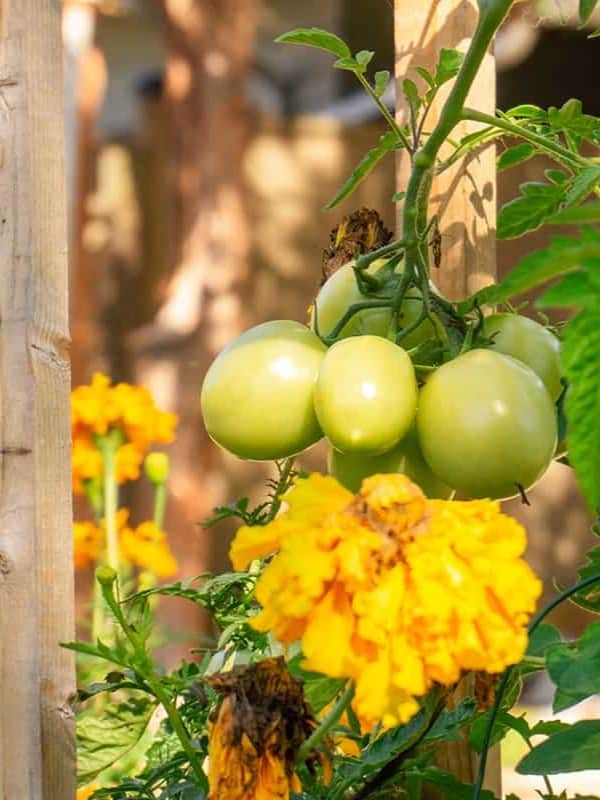
Our first idea for planting marigolds would be to have them surrounding your crops. As we said, marigolds can fend off pests and keep your vegetables safe, making them a perfect barrier plant.
Here, the marigolds are in rows, directly next to each line of cabbage. Not only is this an effective way to keep mosquitoes, nematodes like cabbage worms, and other annoying critters away, but it's also visually stunning.
2. Mixed Flowers In A Wood Container
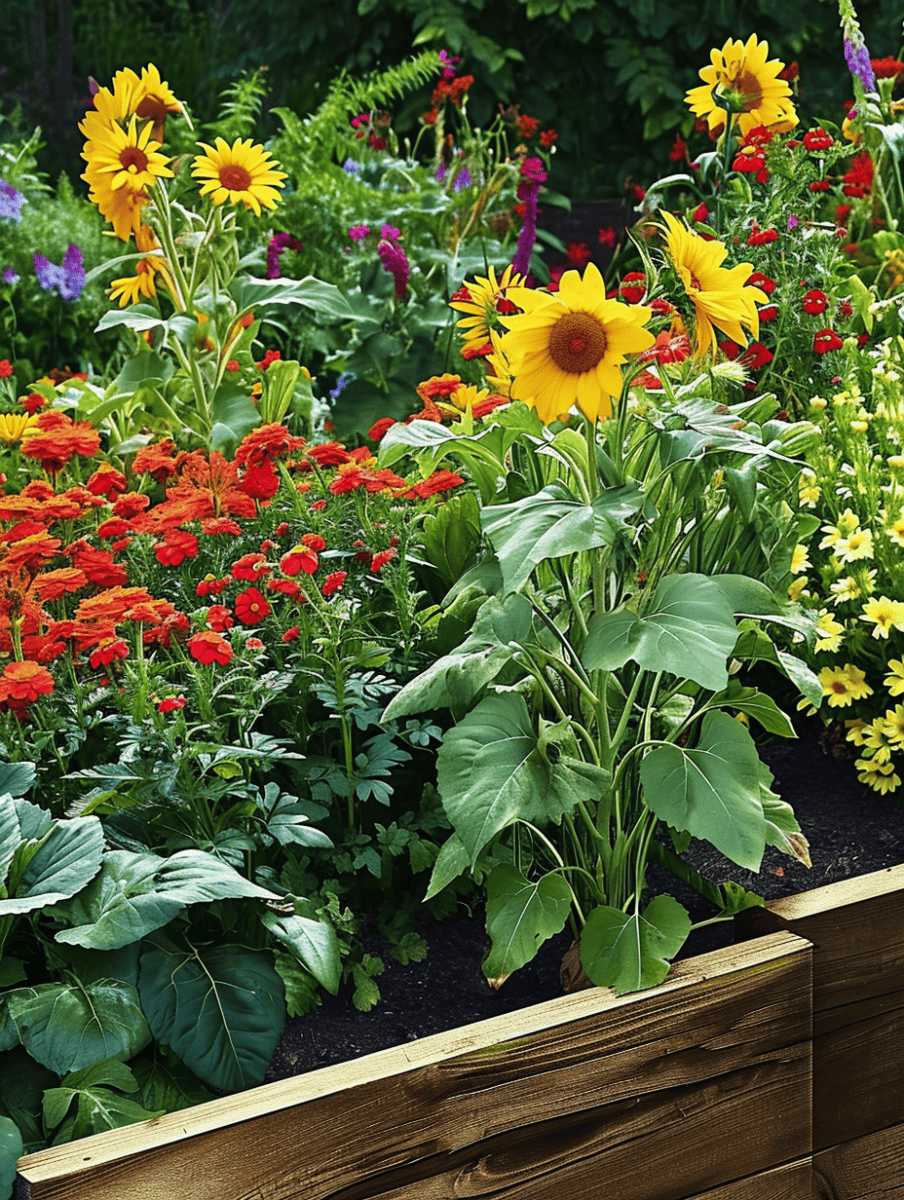
Our next marigold idea for your landscaping is to create a colorful, fall-inspired display. Generally, planting flowers in a raised bed or planted can be helpful, as this protects them from any creatures below.
Additionally, creating a rustic-looking planter for your marigolds/flowers can create structure in your landscape and add a bit of variety. Again, you don't have to build your planter from scratch, as many stores sell options like this.
3. Striking Concrete Planters
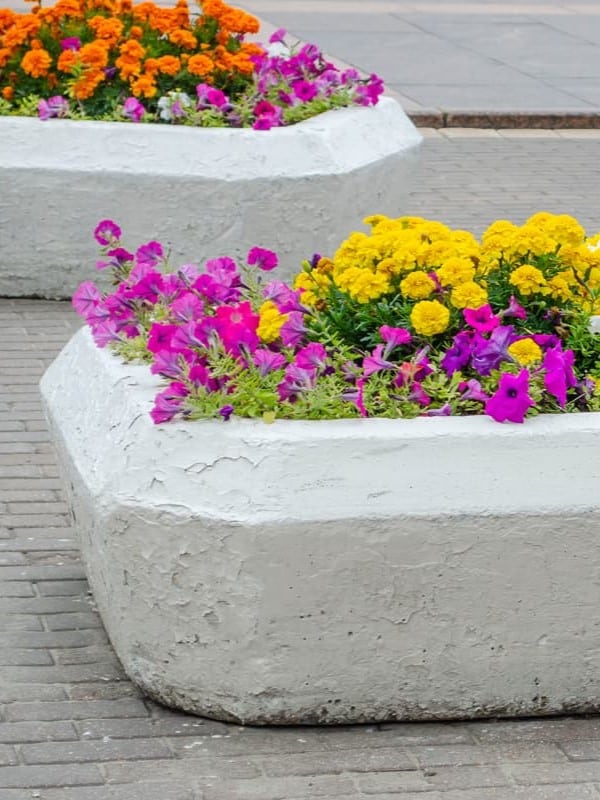
Third, we have a breathtaking idea for your marigolds, including other bright purple flowers. Generally, marigolds work well with different vivid colors, whether it's flowers, pots, or garden decor.
Therefore, adding them to a concrete planter with bright purple flowers is perfect. The red marigolds in the middle complement the orange rows and make this space feel well-designed.
4. Bordering A Flower Garden
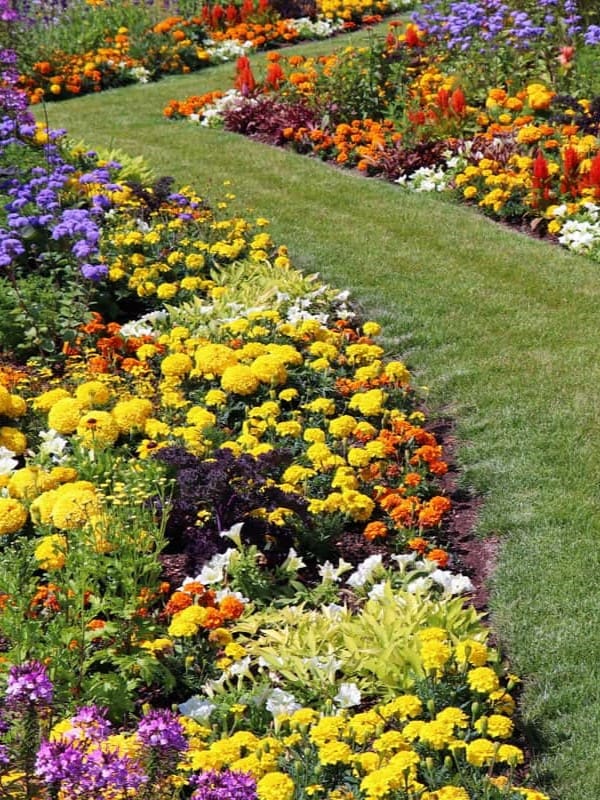
Next up, we have the perfect idea for flower lovers. You can do the same for your vegetable garden by adding marigolds as a border for your other flowering plants.
As we mentioned, these flowers repel pests and can also live harmoniously with other flowers and plants, so you shouldn't worry about aggressive behavior.
5. Letting Them Grow Free
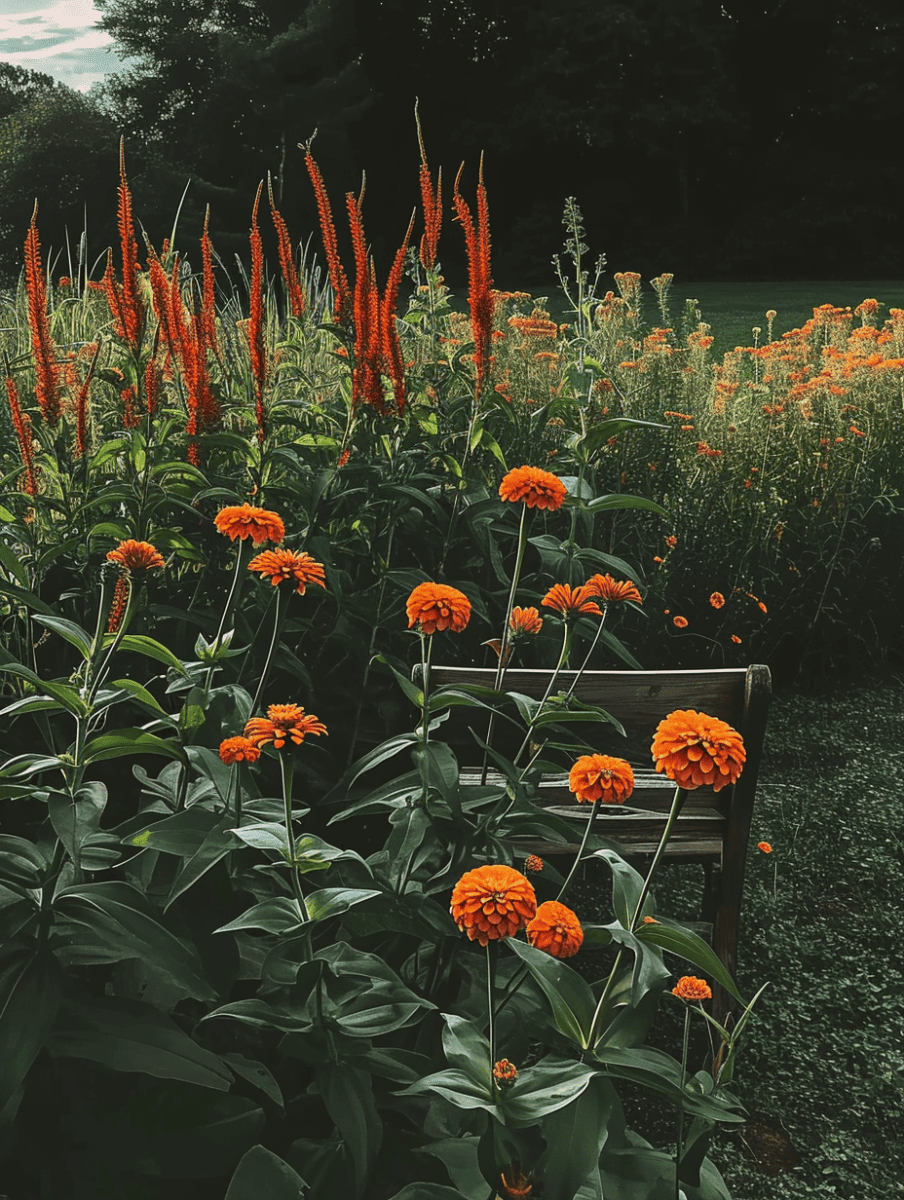
Another way to incorporate marigolds into a landscape is by letting them grow wild. In this garden, you can see how the marigolds are out in the open, growing tall and looking a bit wild.
When we plant flowers, we typically spend time manicuring them. Although that can be nice, letting your plants grow freely without too much additional trimming/training can be a good thing.
6. Utilizing A Spare Fountain
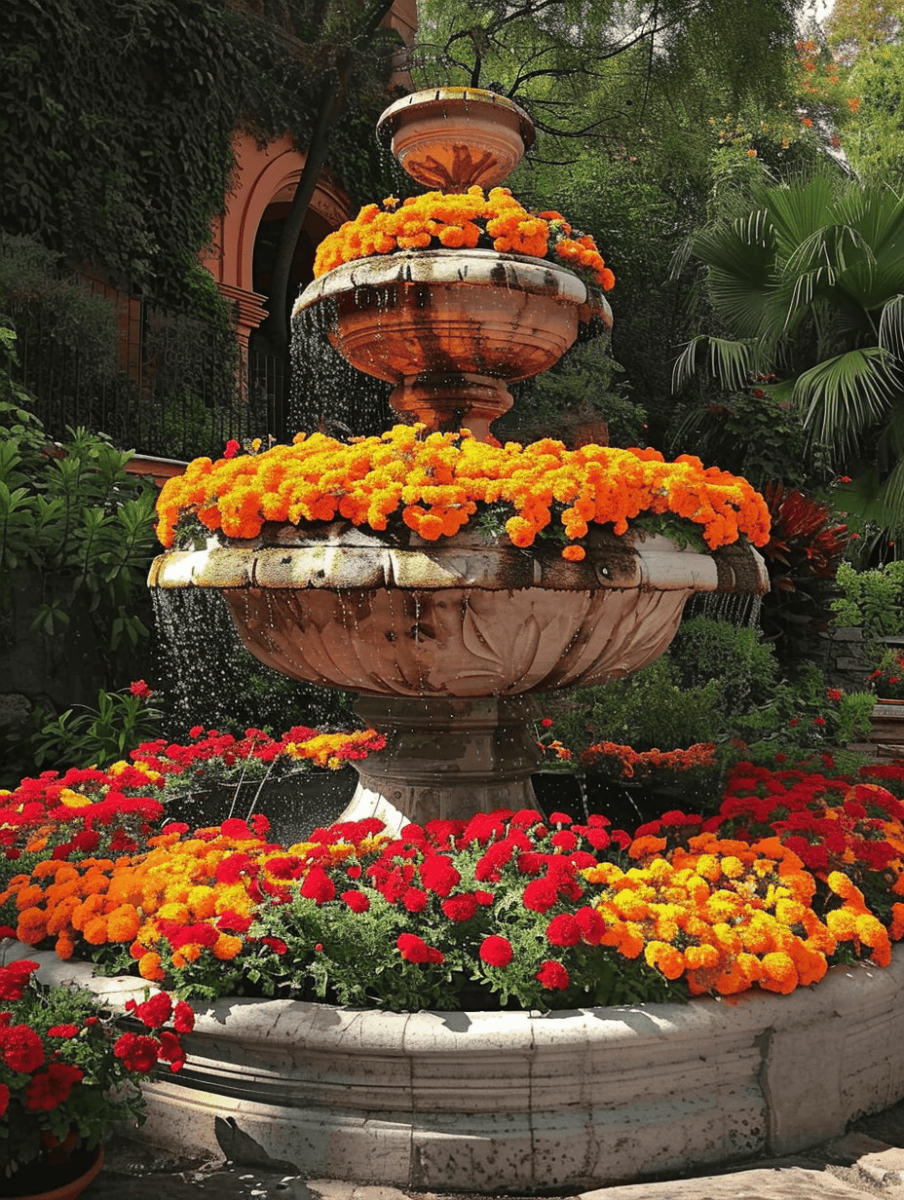
Coming in at number six, we have this breathtaking marigold landscape concept. Besides looking like it belongs in a botanical garden, this marigold display is an excellent example of repurposing something old and making it look brand new.
Therefore, if you have an old, empty fountain and want to bring it back to life, grab some marigolds! Here, you can see how the top layer features red Celosia, while the lower portion has bright yellow marigolds.
7. Creating A Butterfly Hangout
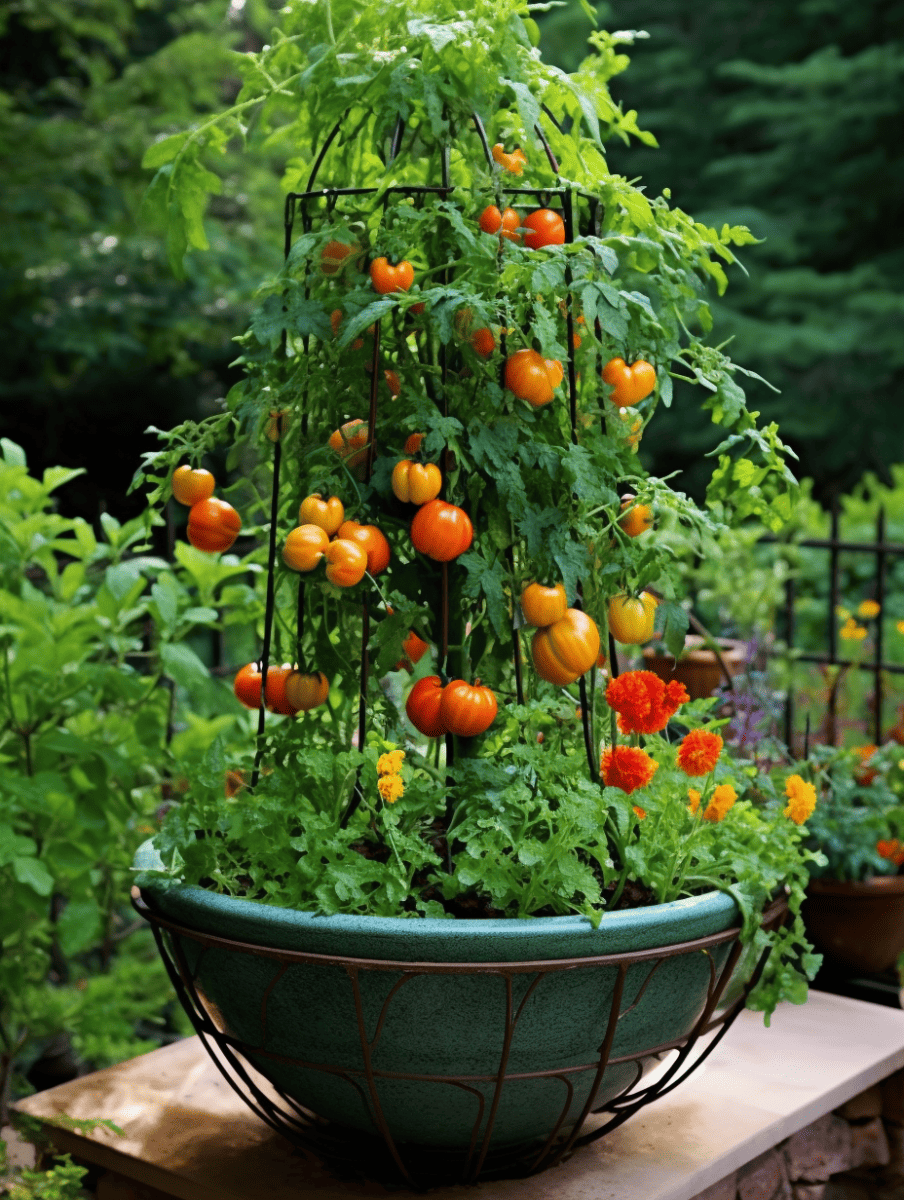
Next, we have an idea for anyone wanting to attract butterflies. An interesting fact about this species is that although its smell repels many creatures, it can attract butterflies.
Therefore, creating a protected, butterfly-friendly space in your landscaping is a great idea. Butterflies love having a spot to rest, drink, and pollinate, so try to do this in a raised bed or planter. The more secluded, the better!
8. Creating A Walkway For Your Home
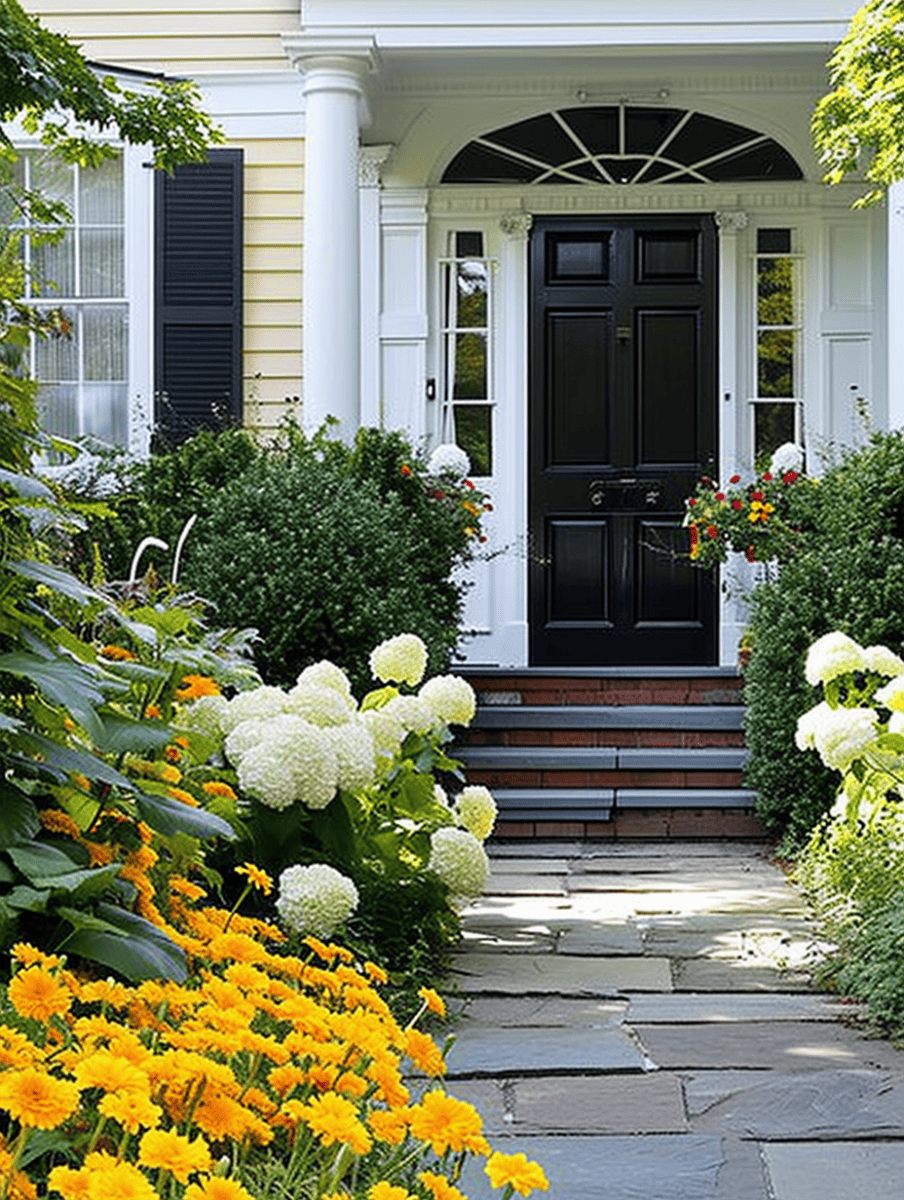
Another idea for marigold landscaping is to create a walkway for your home's front or back door. Generally, we see marigolds in the backyard, protecting crops, but that's not their only usage.
As we mentioned, this species works nicely for decorative purposes and gets along with virtually all flowering species. Therefore, you can line the entrance of your home with marigolds and other gorgeous flowers to make it feel magical.
9. Marigold and Perennial Flower Bed Combinations

Bright orange marigolds pop in this garden, making it a cheerful spot that catches your eye.
Lavender plants add a soft purple splash and a soothing smell to the mix. This bed of flowers comes back every year, always ready to show off its sunny colors and calming scents.
10. Water Feature Surroundings
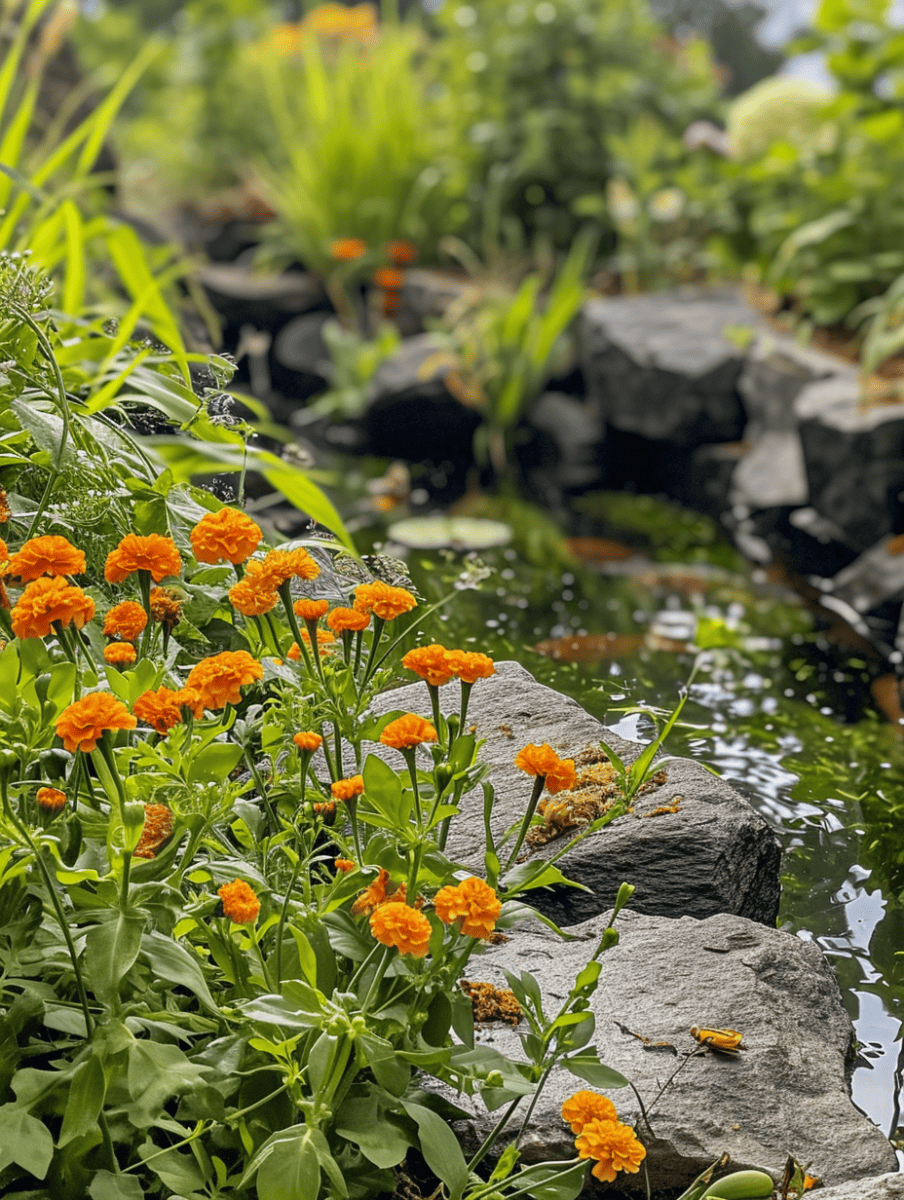
This idea is perfect if you have a pond! Simply line up the edges with some marigolds around it and you've got an attractive landscape. The bright flowers will make the water's edge really pretty.
Marigolds are easy to care for, and they love the sun. Plus, the pond can bring frogs and birds to your garden. It's a cool way to make a splash with color and life in your backyard.
11. Marigold-Lined Driveways
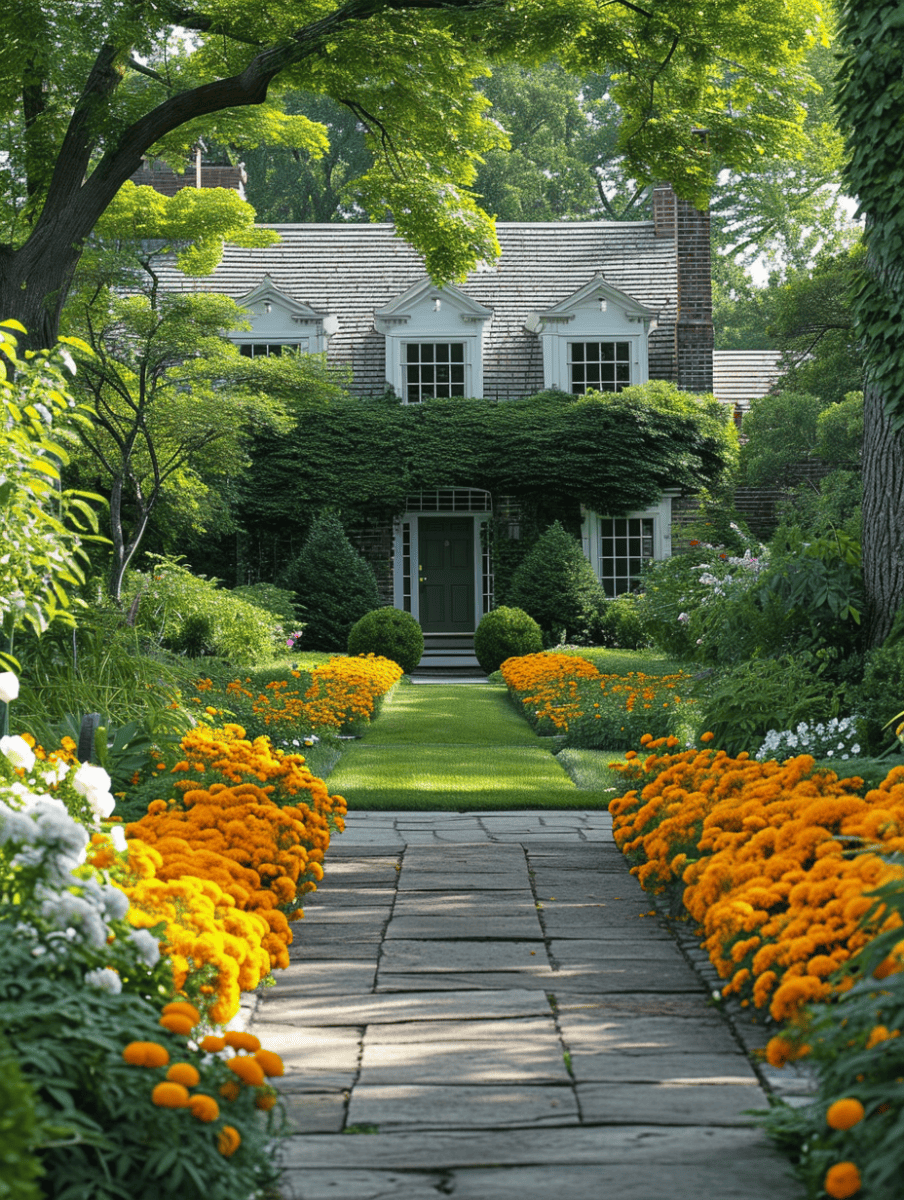
If you line your driveway with marigolds, it'll turn heads for sure. These sunny flowers make the path to your door warm and welcoming. As we've mentioned a lot, marigolds are tough; so they can handle the hot sun and don't need much fuss.
Having them by the driveway means you'll smile every time you come home. It's a simple touch that adds a bunch of bright, happy color to your everyday.
12. Marigold Ground Cover
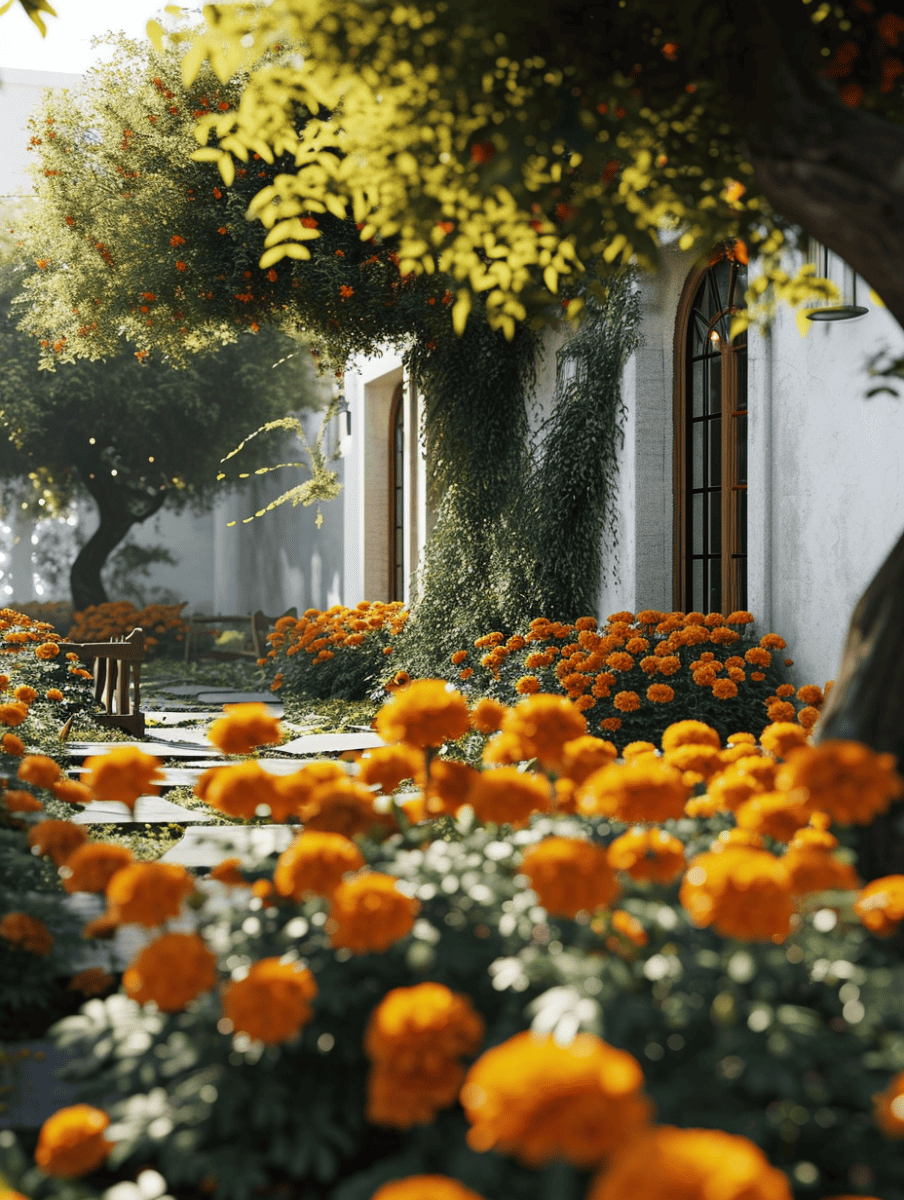
Marigolds also make a perfect ground cover in gardens; they spread out to create a carpet of orange. They're great for filling up space with color and life.
Plant them in a sunny spot, and they'll bloom all through the warm months. It's like a bright, orange blanket that makes any garden corner cozy.
13. Try Marigold In Hedges
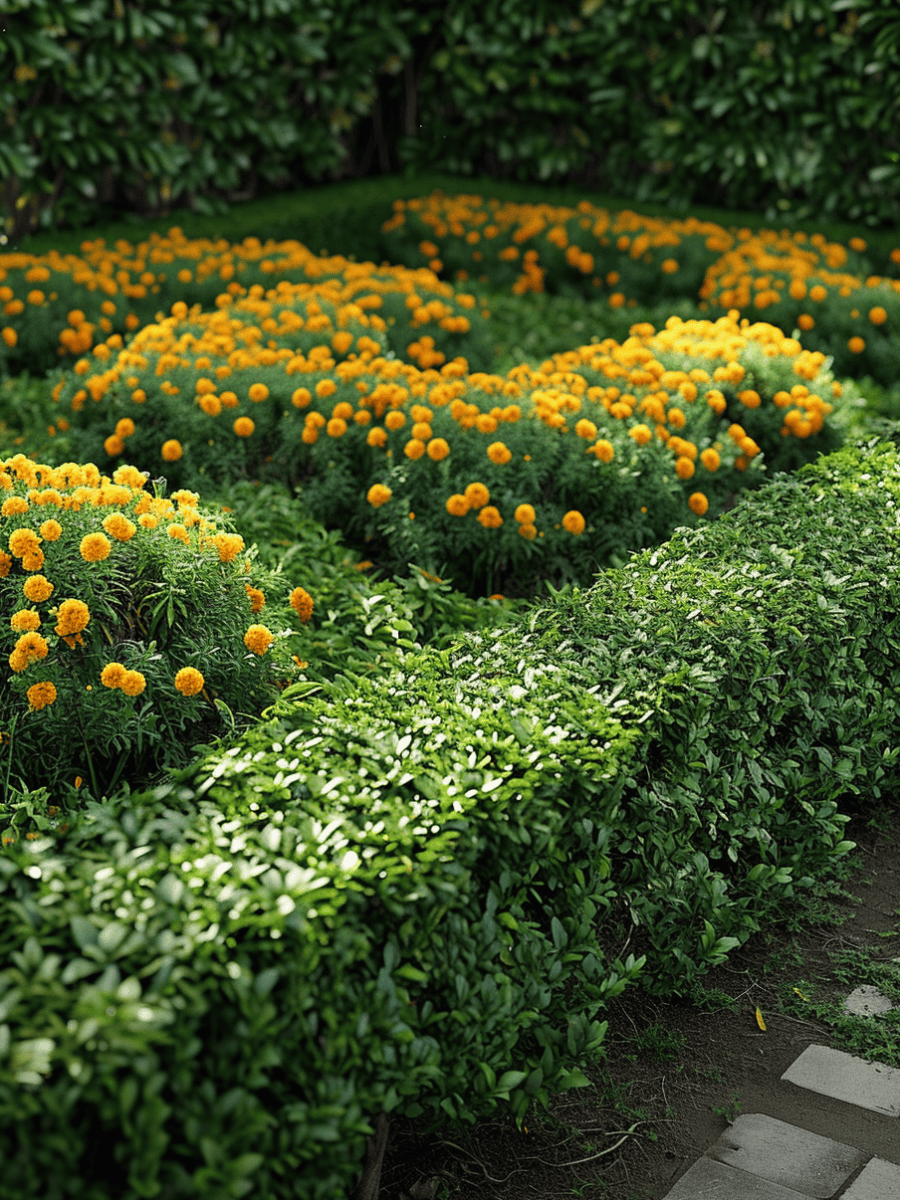
Marigolds tucked in hedges make a garden maze of sunshine. They're like bright spots of light among the leaves. You can plant them once and watch them come back each year.
Walking by, you'll get to see the cool green of the hedges and the warm yellow and orange of the marigolds. It's a fun way to mix colors in your garden.
14. Spilled Marigold In An Overturned Terracotta Planter
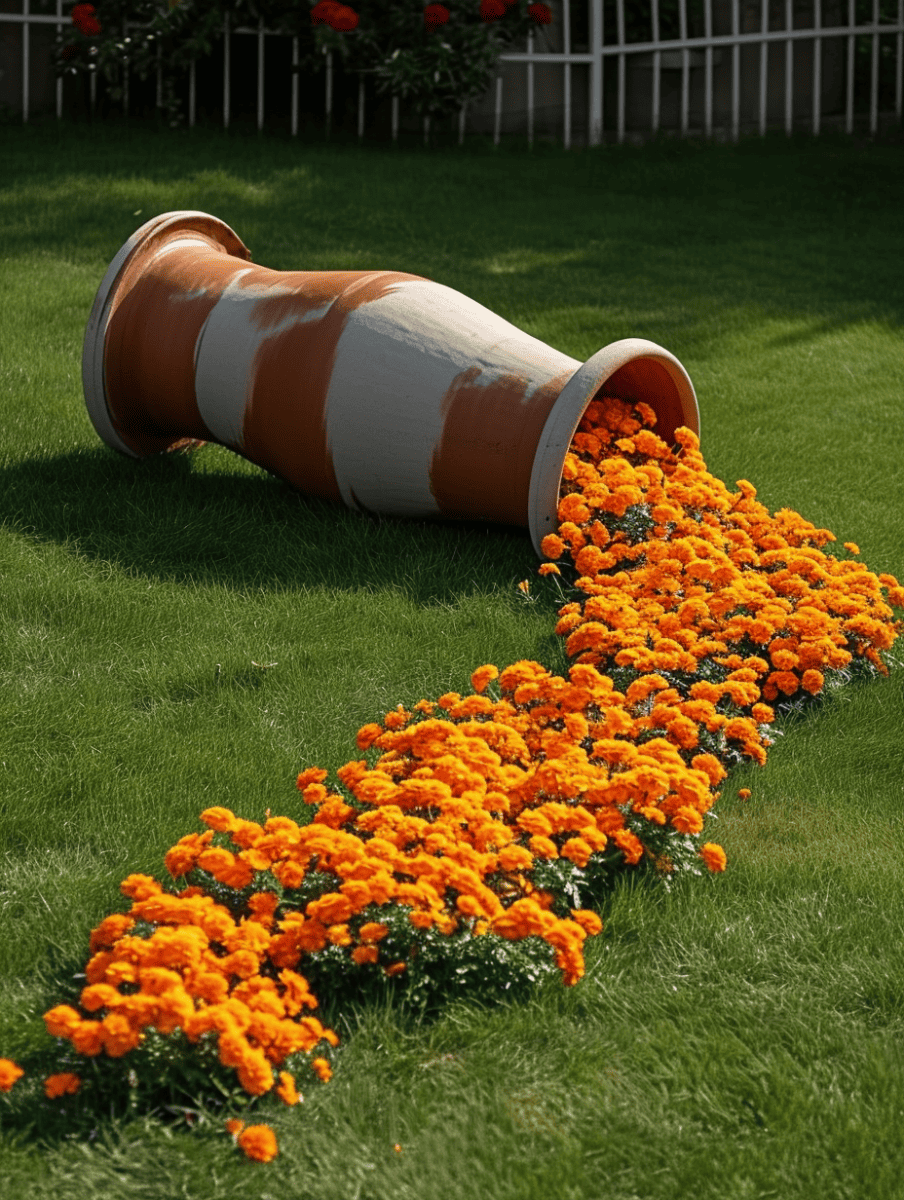
If you're looking to add a bit of whimsy to your garden, try a giant tipped-over planter spilling out marigolds. It's like a magic trick with flowers tumbling onto the lawn.
This playful look is easy to set up and really catches the eye. Marigolds are tough and grow fast, so they'll fill out the spilled-over look in no time. Plus, it's a fun conversation starter for anyone who sees your garden.
15. Plant Marigolds Right At Your Doorstep
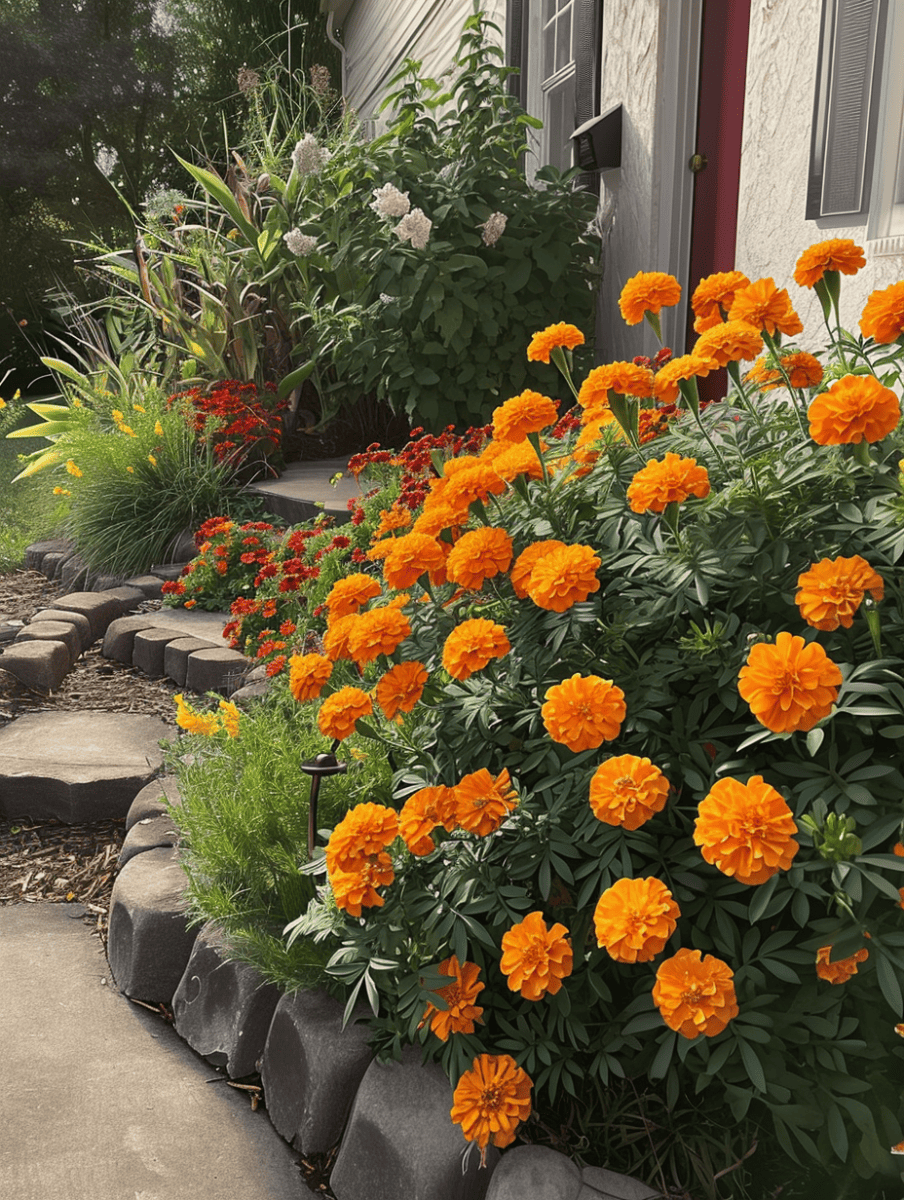
Putting marigolds right by your doorstep makes for a sunny welcome. Their bright orange blooms add a pop of color that's hard to miss.
Stepping out or coming in, they're a cheerful sight that livens up the entrance. It's a simple touch that transforms your doorstep into the highlight of your home.
16. Plant Marigold In Rainbows
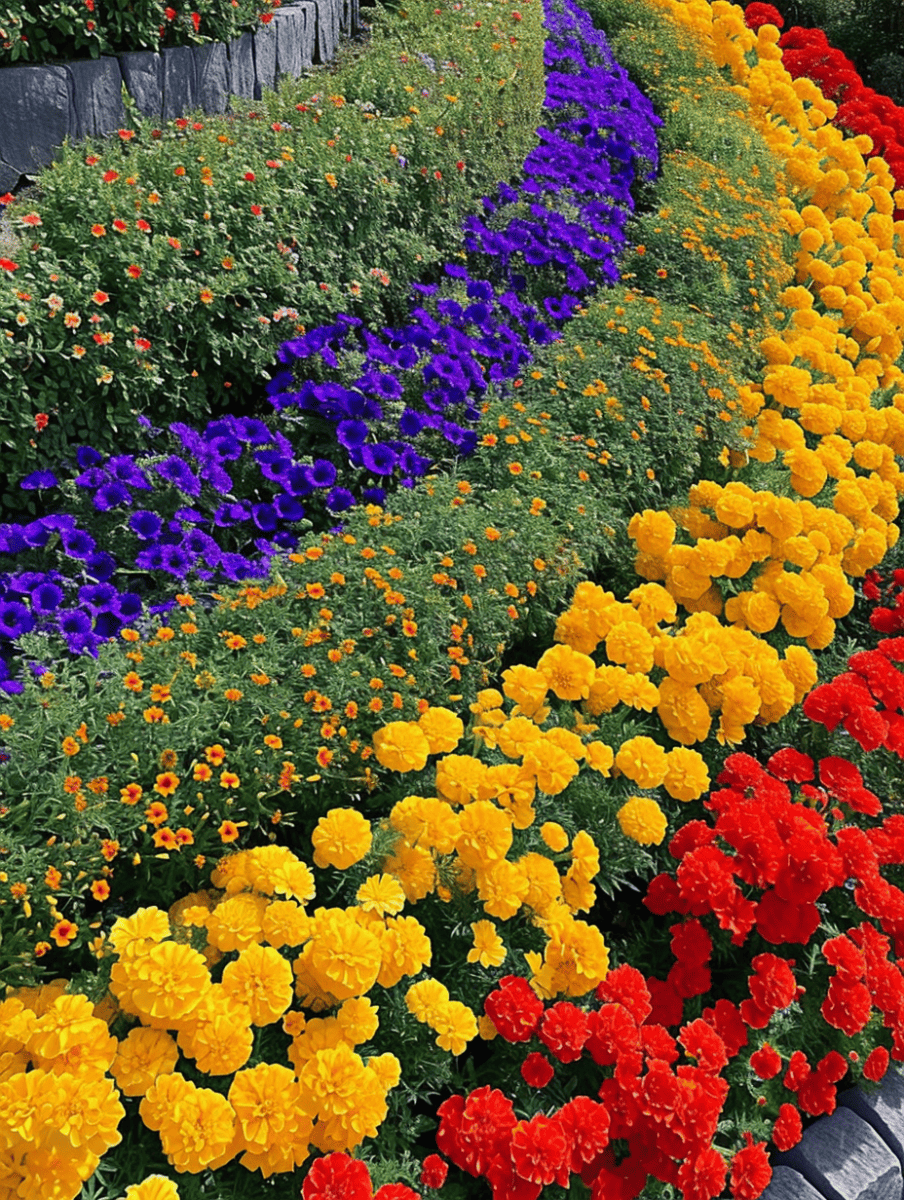
Another great lanscapaing idea is to plant rows of marigolds and make a rainbow right in your garden, with happy colors like yellow, orange, and red.
Purple flowers pop up in between, like a surprise in the sea of warm colors. It's like a party for your eyes, with all these colors making a path that looks so fun to walk down.
This garden is just the thing to make anyone smile and feel like they're walking through a rainbow. It's pretty and simple, just lots of bright flowers dancing together.
17. Marigold Patterns in Flower Beds
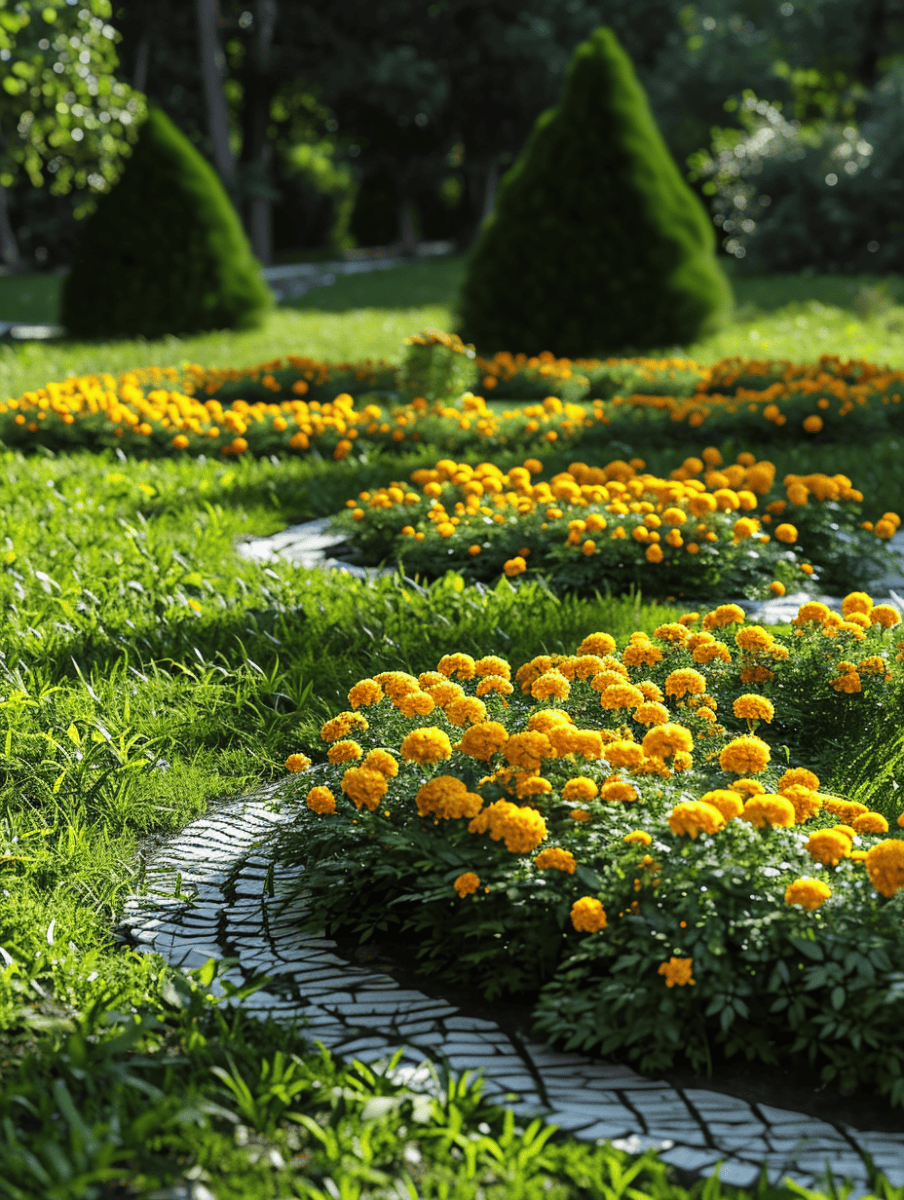
Look at these marigolds in the garden! They're round like little suns sitting on the ground. If you walk on the stone path, you'll feel like you're hopping from one yellow spot to another.
Try making flower beds like these to brighten up your yard. They're easy to do and so pretty to look at, like a smile from the earth!
18. Create A Sunshine Parade
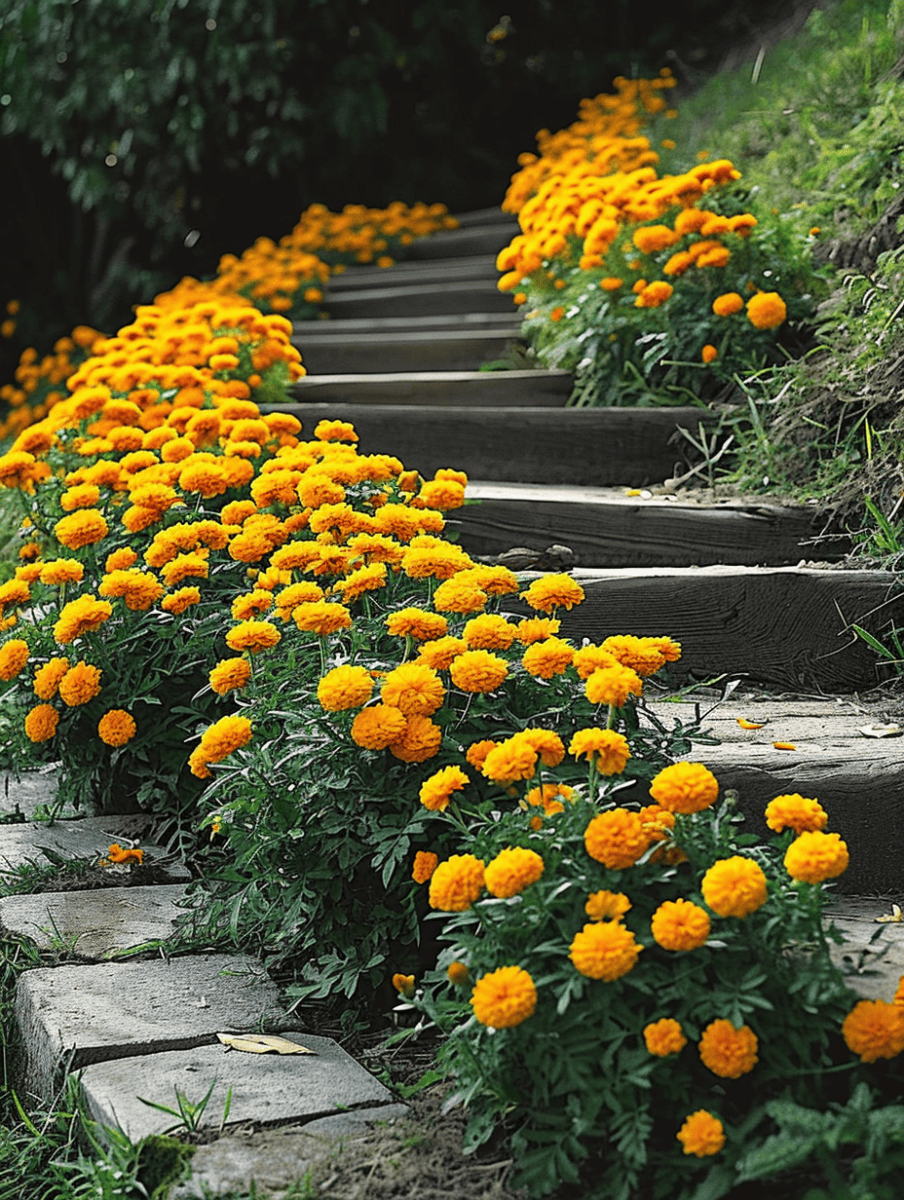
Turn your garden steps into a sunshine parade with marigolds! Lining up the stairs with these bright flowers makes going up feel like climbing into a storybook.
It's easy to do, just plant them along each side. They'll make every step pretty and full of cheer. Give it a try to make your garden stairs special and full of light!
19. Marigolds in Raised Garden Beds
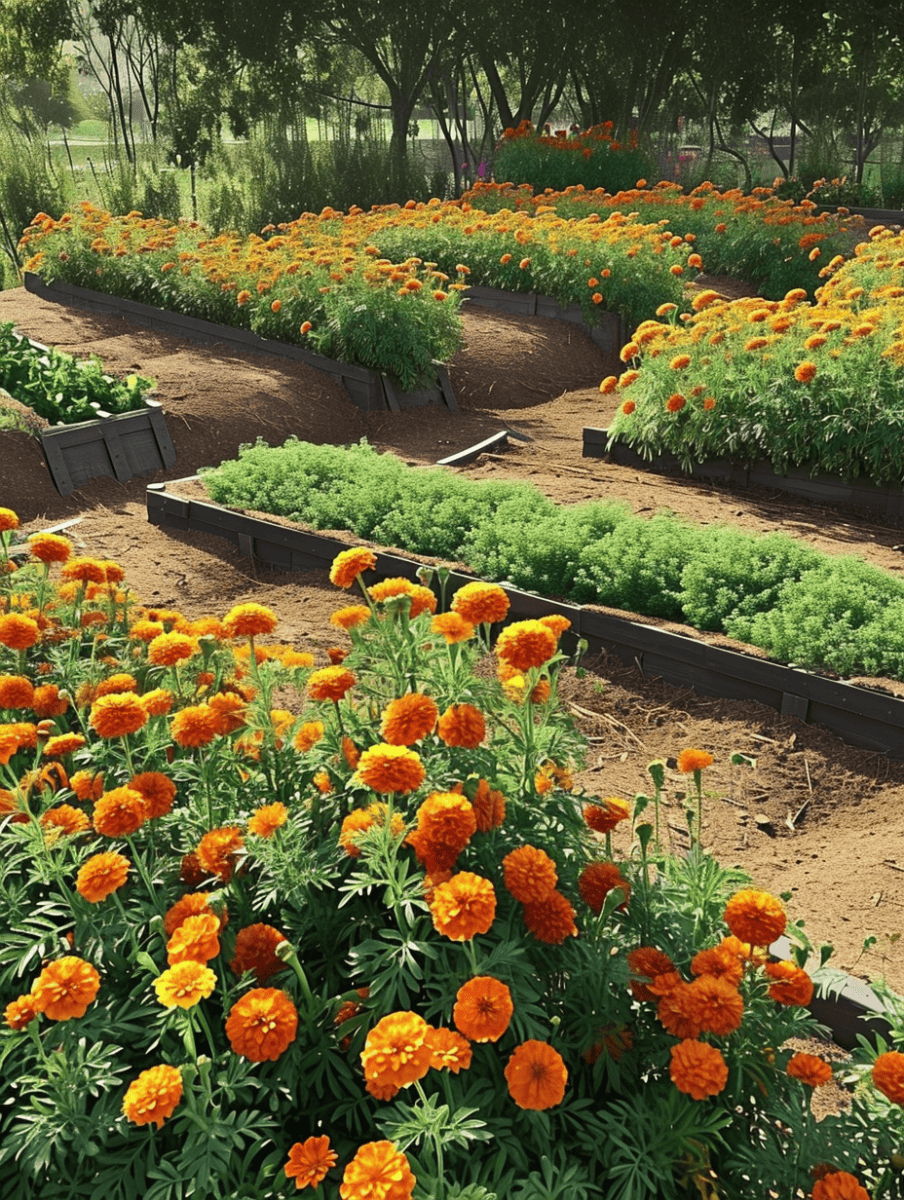
If you like the country vibe, try adding a splash of sunshine to your garden with marigolds in raised beds! These flower beds are easy to reach and care for, making gardening a breeze. Fill them up with marigolds for a bold pop of orange that's sure to cheer up any space.
Raised beds also mean less bending down, so you can enjoy planting more. Give your garden a makeover with these bright blooms that stand out and bring joy.
20. Make An Island Of Marigolds in Your Lawn
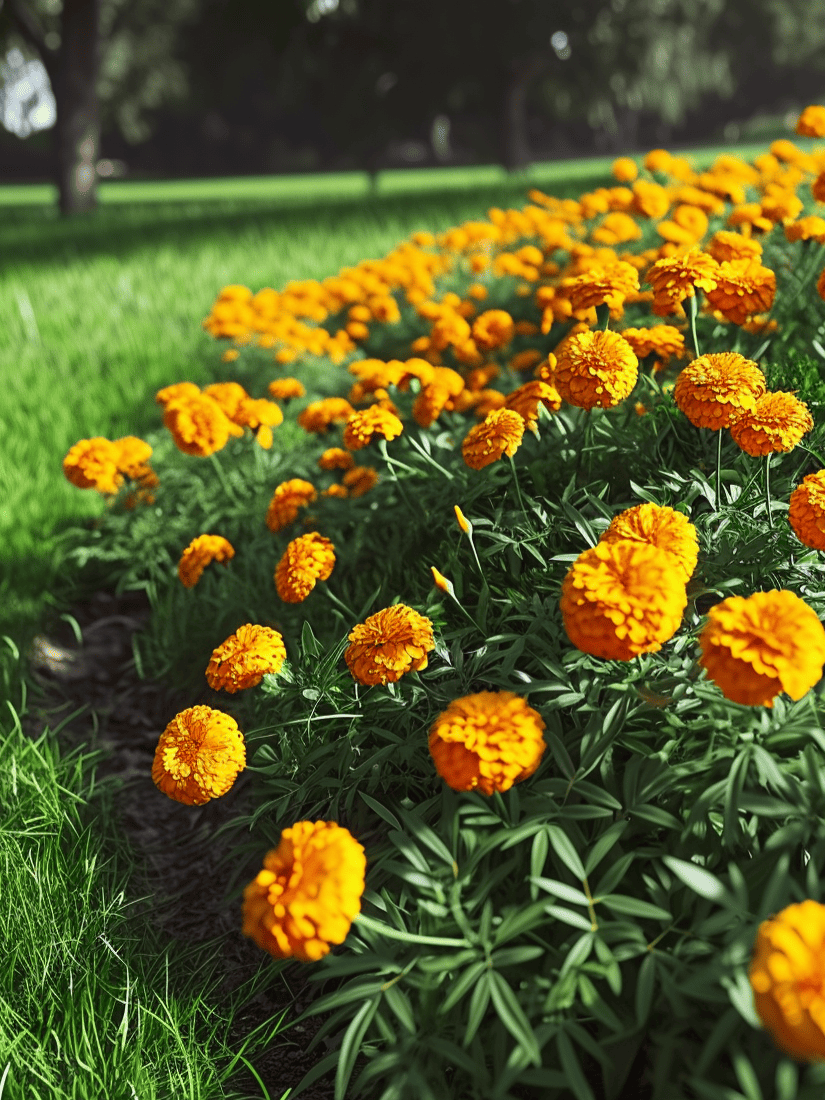
You could also try creating a little island of joy in your lawn with a bunch of marigolds! They're like little suns that light up a patch of green.
Just choose a spot in your yard and plant them in a circle or any shape you like. These bright flowers will make that spot shine and stand out. It's a fun and easy way to make your lawn look extra special.
21. Use Marigolds To Circle The Base Of Your Trees

Our last idea is to circle your trees with marigolds to make a sunny ring around them. It's like giving your tree a bright, orange hug.
Doing this makes a cool spot for your tree to stand out. Try this to give your garden a fun, colorful touch that everyone will love.
Where Should You Plant Marigolds?
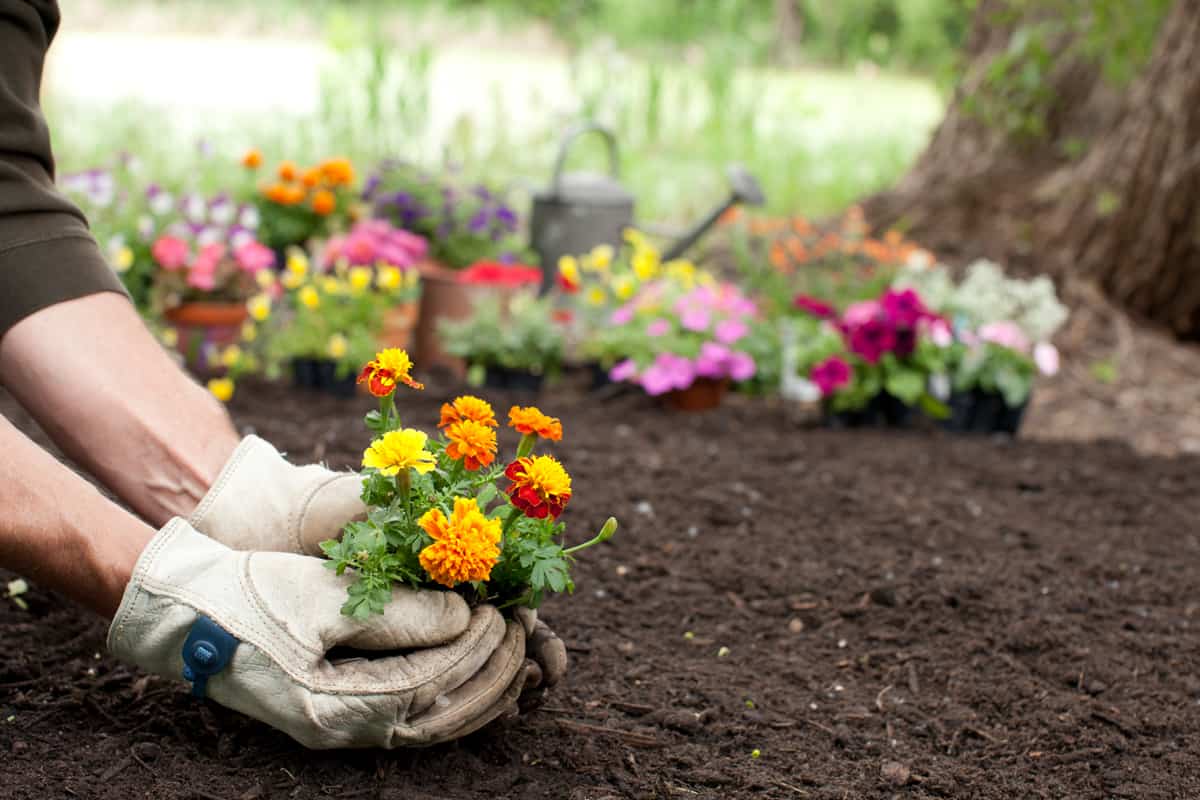
Generally, this flowering species does best in full sun. However, if you're somewhere with extreme heat in the summer, your marigolds could benefit from partial or dappled shade.
Even if a plant loves sunlight, it can still become burned with too much. In addition, your plants will need fertile, well-draining soil, so make sure to use a high-quality mix.
Many experts recommend growing smaller marigold varieties as edging plants for borders, while larger ones can go out into open land.
What Month Is Best To Plant Marigolds?
You usually want to plant marigolds in the spring or early summertime. Since this species tends to be annual, you only have a limited time to get one into the ground and grow before the winter.
Specifically, French and signet marigolds can be planted during the early spring to mid-summer. In contrast, if you have an African marigold, you want to get it into the soil immediately in the spring.
That's because African marigolds take longer to grow and produce flowers. Again, time is of the essence with this flowering species.
With that said, if you're somewhere warm throughout the year, you might be able to see your marigold continue growing well past the fall or winter seasons.
Climate is one of the leading causes of marigold dormancy and death, so the colder it is, the less likely your marigold will survive.
How Many Hours Of Sunlight Do Marigolds Need?
![Orange marigold flowers and foliage, Are My Marigolds Perennial Or Annual? [Breakdown By Type]](https://gardentabs.com/wp-content/uploads/2022/10/Orange-marigold-flowers-and-foliage.jpg)
If you want to plant marigolds somewhere, they'll get at least six hours of direct sun daily. As we said, this species typically prefers full sun, so not having enough exposure can be a problem.
Since this flowering species responds best to plenty of sunshine and warm weather, planting it in an overly shaded spot can lead to health issues.
Do Marigolds Grow Better In Tropical Conditions?
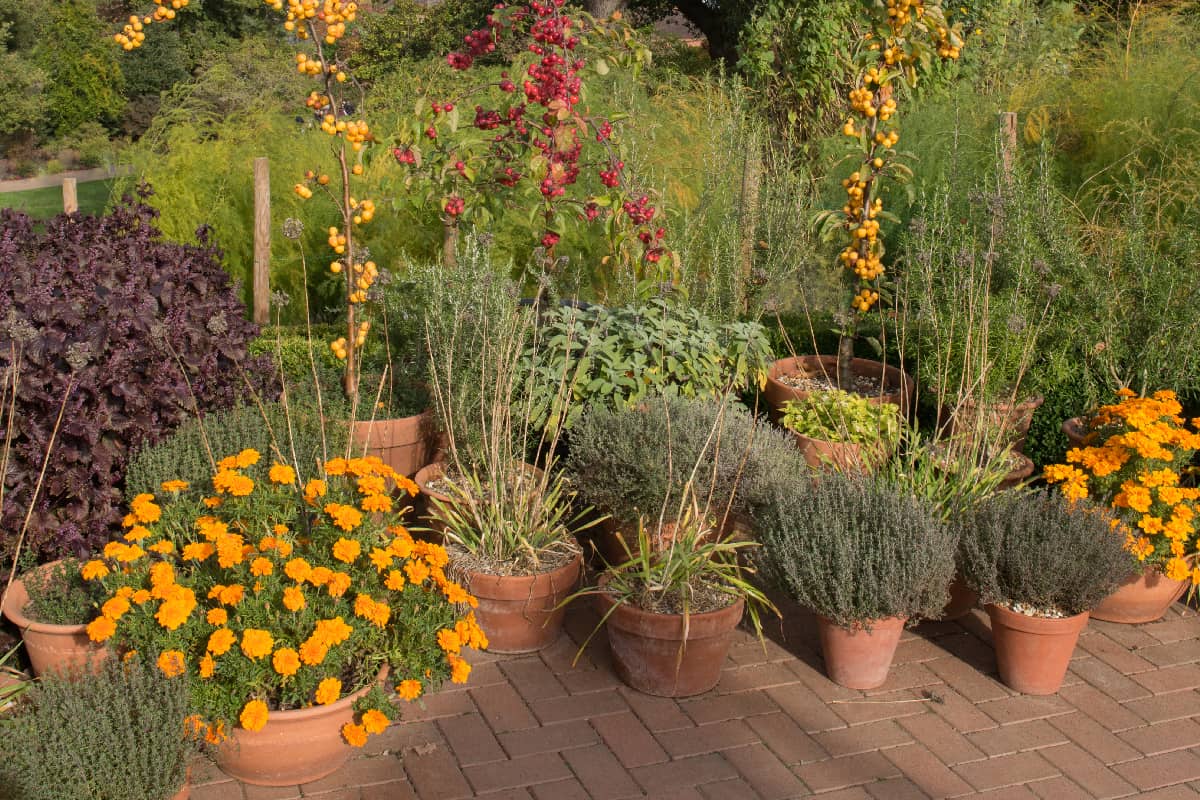
In general, marigolds will grow better in warm year-round climates. Although they don't technically need to be in the tropics, subtropical conditions can make for great long-term plant health.
As we said, your marigolds will prefer plenty of sunshine. However, they also like being in places with frequent rain, which can cool them off during excess heat.
Oddly enough, marigolds also thrive in the desert. So, this could be a perfect choice for your landscaping if you're in Arizona or Nevada.
As long as you supply your marigolds with enough water, they will survive extreme heat. In contrast, if you're somewhere more moderate, you can cut back on the water and try to give your flowers as much sun as possible (6-8 hours daily).
Conclusion
Whether you have marigolds in your garden or want to purchase some, making a plan is essential. We found that you can use marigolds for your planters, vegetable or fruit gardens, as butterfly attractors, and even to repurpose an old fountain.
This species is beautiful, repels harmful insects, and can make the perfect entryway to your home. In general, marigolds will be bright red, yellow, or orange, so don't be afraid to mix other vivid hues with them. Like our example, you can create raised flower beds or utilize wooden crate containers.
Give your flowers plenty of sun, fertile ground, and enough drainage. Good luck, and have fun gardening!
Made it to the end? Check out these helpful related posts below:
Are My Marigolds Perennial Or Annual? [Breakdown By Type]
Are Marigolds Drought-Tolerant? [& Should They Be Watered Daily?]
Do Marigolds Attract Bees And Butterflies? [Yes! Tips For Planting Them In Your Yard]
![Blooming marigold near fountain, 8 Marigold Landscaping Ideas [With Pictures To Inspire You!]](https://gardentabs.com/wp-content/uploads/2022/11/8-Marigold-Landscaping-Ideas-With-Pictures-To-Inspire-You.jpg)
